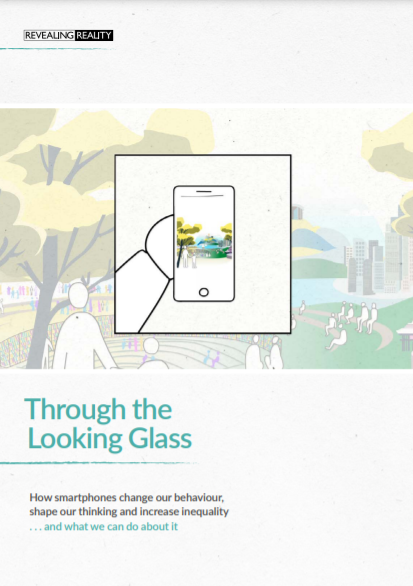How do our smartphones influence our behaviour?
There’s little talk of the digital divide anymore – almost everyone who wants to can be online. But has the rapid adoption of smartphones benefited everyone equally? Do some people suffer negative effects from their smartphone use more than others?
Revealing Reality has been researching the ways people use their phones for an ongoing, self-funded research project we have called Through the Looking Glass.
Warnings that smartphones may be bad for us tend to focus on the potential dangers of too much screen time, or the ills of social media, or the risk that we are giving away our data without realising.
They don’t tend to focus on the phone itself, how its design – and its limitations – influence the ways we behave and even the ways we think, and the knock-on effects this has on us collectively and as individuals. This is what our research project has set out to explore.
This first Through the Looking Glass report and the animations that accompany it attempt to bridge that gap, to share the ideas we have developed in the course of our research.
We hope they will be a useful contribution to the thinking in this area for practitioners and policy-makers, as well as parents, teachers and all of the rest of us who want to be as smart with our phones as possible, and help others around us to do the same.
The report is available as:
- a PDF ideal for printing or reading on a desktop computer
- a series of linked online articles, each focusing on a particular idea, that can be read on a phone or desktop
- four short engaging animations illustrating the key ideas from the research, intended as a shareable resource to prompt reflection or discussion.
Links:
1. Introduction: How smart are you with your phone?
3. Emoji: what are they good for?
5. A digital Swiss army knife: The price of convenience
6. What are the opportunity costs of using our phones?
8. Conclusion: How can we be smarter with our phones?
9. Why we set up Through the Looking Glass
Animation: A digital Swiss army knife
Animation: Illusions of success

